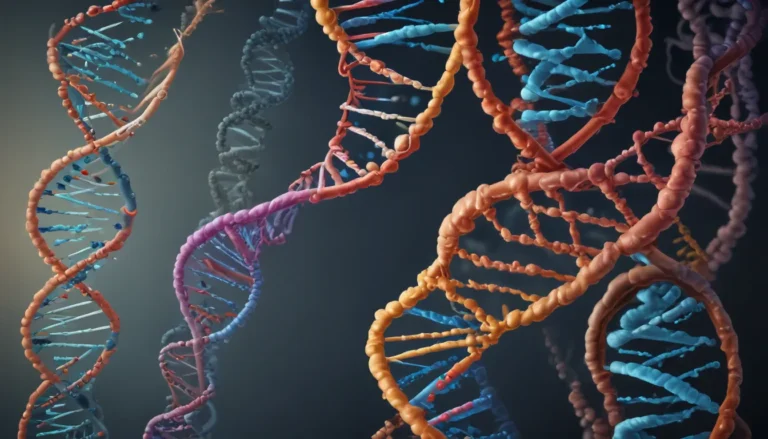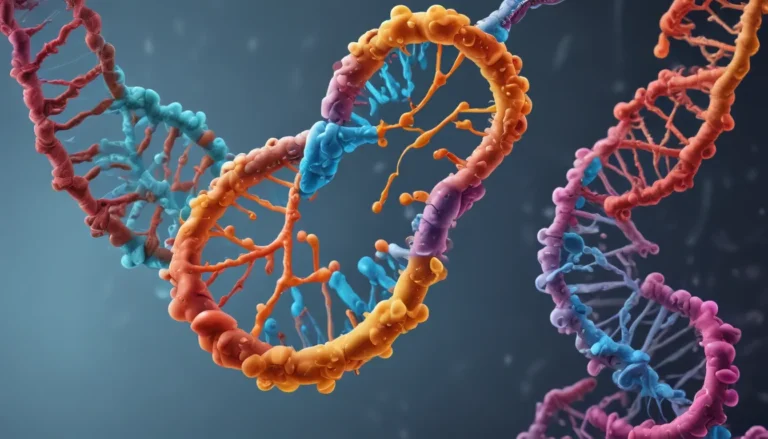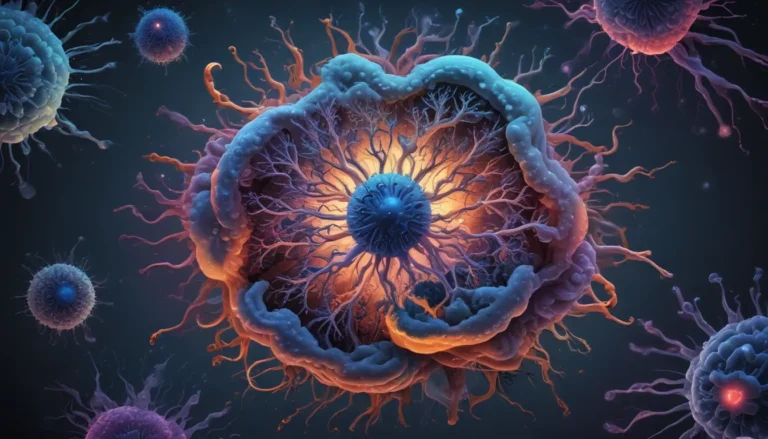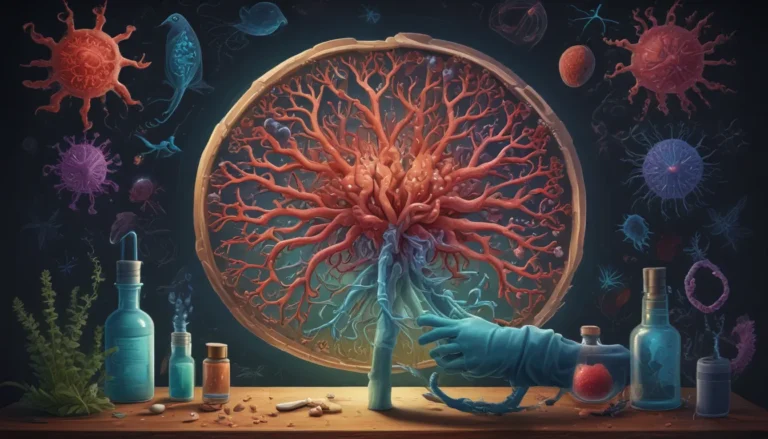A Note About Images: The images used in our articles are for illustration purposes only and may not exactly match the content. They are meant to engage readers, but the text should be relied upon for accurate information.
In the realm of photosynthesis, light-dependent reactions play a crucial role in converting sunlight into chemical energy, fueling the growth and survival of plants. Delving into the intricate mechanisms and adaptations that drive this fundamental process can illuminate the awe-inspiring world of photosynthetic organisms. In this educational journey, we will uncover 14 captivating facts about light-dependent reactions, shedding light on the remarkable ways in which plants harness the power of light to thrive and sustain life on our planet.
Understanding the Essence of Light-Dependent Reactions
-
Light-dependent reactions are the cornerstone of photosynthesis, converting light energy into chemical energy in the form of ATP and NADPH. These energy-rich molecules serve as the lifeblood for plants, enabling them to carry out essential biological processes for growth and development.
-
Factors such as light intensity, specific pigments, and environmental conditions play a pivotal role in shaping the efficiency of light-dependent reactions. By grasping the influence of these factors, we can optimize plant photosynthesis and enhance agricultural productivity.
The Enchanting World of Thylakoid Membranes
-
Light-dependent reactions unfold within the thylakoid membranes of chloroplasts, where photosystems I and II reside. These membrane-bound protein complexes act as the gatekeepers of light energy, kickstarting the electron transport chain that powers the synthesis of ATP and NADPH.
-
Photosystem II serves as the starting point of light-dependent reactions, absorbing photons and passing on excitation energy to the reaction center chlorophyll a molecule. The subsequent transfer of electrons sets the stage for a cascading chain of events that culminates in the generation of ATP.
Unveiling Oxygen as a Byproduct
- A fascinating byproduct of light-dependent reactions is the production of oxygen through the splitting of water molecules by the water-splitting complex. This essential gas not only sustains life on Earth but also underscores the interconnectedness of photosynthesis with the ecosystem.
The Dance of ATP and NADPH
-
ATP synthase acts as a molecular powerhouse, generating ATP as electrons flow through the electron transport chain and trigger the movement of protons across the thylakoid membrane. This energy currency fuels the biochemical reactions essential for plant growth and metabolism.
-
In parallel, Photosystem I steps into the spotlight by harnessing light energy to reduce NADP+ to NADPH, a pivotal molecule that fuels the synthesis of glucose in the Calvin cycle. Together, ATP and NADPH form the dynamic duo driving the metabolic engine of plants.
Harnessing the Power of Light and Pigments
-
Light intensity stands as a pivotal player in the rate of light-dependent reactions, with higher light levels accelerating electron flow and the production of ATP and NADPH. This dynamic interplay underscores the sensitivity of photosynthesis to environmental cues.
-
Specific pigments such as chlorophyll a, chlorophyll b, and carotenoids serve as the visual artists capturing light energy across a spectrum of wavelengths. Their harmonious collaboration maximizes the absorption of energy and fuels the biochemical orchestra of photosynthesis.
Decoding the Absorption Spectrum of Chlorophyll
- Chlorophyll molecules exhibit a unique absorption spectrum with peak absorption in the red and blue regions of the visible light spectrum. These vibrant peaks align with the wavelengths most conducive to photosynthesis, optimizing the capture of light energy.
Embracing the Dance of Electrons
- The movement of electrons within photosystems orchestrates a symphony of redox reactions, creating an electrochemical gradient that propels the generation of ATP. This intricate dance of electrons underscores the dynamic nature of light-dependent reactions.
Nurturing Light-Dependent Reactions in Challenging Environments
- Sensitivity to environmental factors such as temperature, light quality, and water availability underscores the adaptability of light-dependent reactions. Adverse conditions can dampen photosynthetic activity and impact plant growth, highlighting the resilience of photosynthetic organisms.
Illuminating the Role of Sunlight in Light-Dependent Reactions
- As the name implies, light-dependent reactions are contingent upon the presence of sunlight to fuel the conversion of light energy into chemical energy. Daylight serves as the catalyst for this transformative process, driving the biochemical machinery of photosynthesis.
Paving the Way for Dark Reactions
- Light-dependent reactions set the stage for the Calvin cycle, laying the foundation for the synthesis of glucose and other essential compounds. This interwoven dance between light-dependent and light-independent reactions sustains the intricate balance of photosynthesis.
Nurturing Sustainability Through Byproduct Recycling
- The recycling of NADP+ molecules from the Calvin cycle back to light-dependent reactions completes the metabolic loop, ensuring a sustainable flow of energy and nutrients to support plant growth and vitality.
Illuminating the Significance of Light-Dependent Reactions
In conclusion, the 14 enchanting facts about light-dependent reactions unveil the intricate tapestry of mechanisms that underpin the conversion of light energy into chemical energy. By unraveling these processes, we gain a profound appreciation for the indispensable role of photosynthesis in sustaining life on Earth and preserving the delicate balance of our ecosystems.
FAQs: Exploring Light-Dependent Reactions
-
What are light-dependent reactions?
Light-dependent reactions are a series of chemical processes that capture sunlight energy and convert it into chemical energy in the form of ATP and NADPH. -
What is the role of light-dependent reactions in photosynthesis?
Light-dependent reactions generate energy-rich molecules that drive the Calvin cycle, enabling plants to convert carbon dioxide into glucose. -
How do light-dependent reactions capture sunlight?
Pigments like chlorophyll absorb light energy within the thylakoid membrane, initiating electron transfers that culminate in the production of ATP and NADPH. -
Why are light-dependent reactions significant?
Light-dependent reactions provide the essential energy source for plant growth, oxygen production, and the foundational support of the food chain in ecosystems. -
Can light-dependent reactions occur without sunlight?
No, light-dependent reactions rely on sunlight as the primary energy source, emphasizing the essential role of sunlight in driving photosynthesis.
Embark on an Enlightening Journey
Light-dependent reactions serve as a gateway to the captivating world of photosynthesis, where light is transformed into life-sustaining energy through a symphony of biochemical processes. As we unravel the mysteries of these fascinating reactions, we deepen our connection to the intricate tapestry of life on Earth. Join us on this enlightening journey of discovery and appreciation for the wonders of nature’s energy-harnessing mechanisms.
Our commitment to delivering trustworthy and engaging content is unwavering, fueled by the diverse insights and contributions of our dedicated community. With a relentless focus on accuracy and authenticity, we strive to offer a rich tapestry of knowledge that inspires and informs. Trust in our dedication to quality as we continue to illuminate the world of science and discovery.






